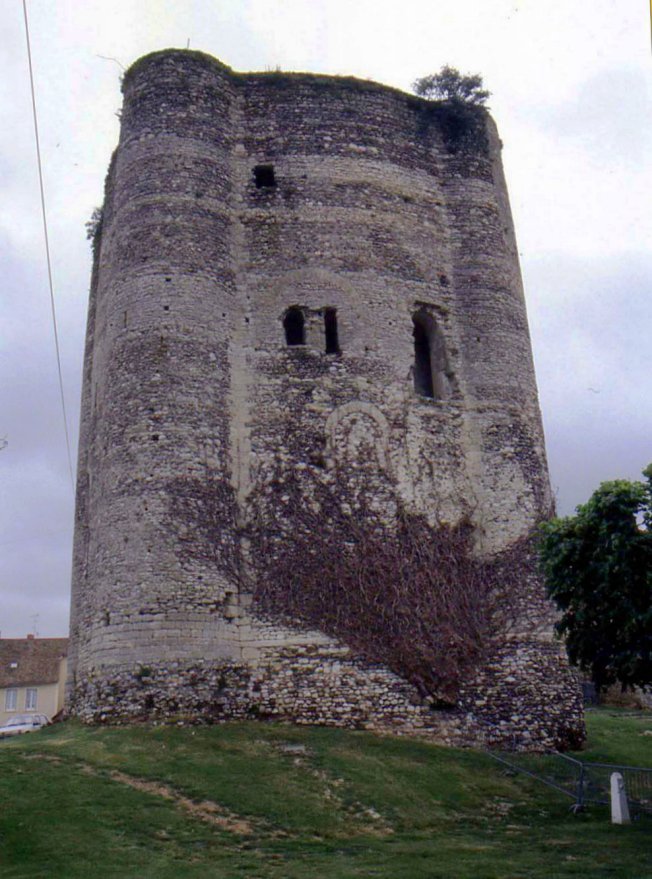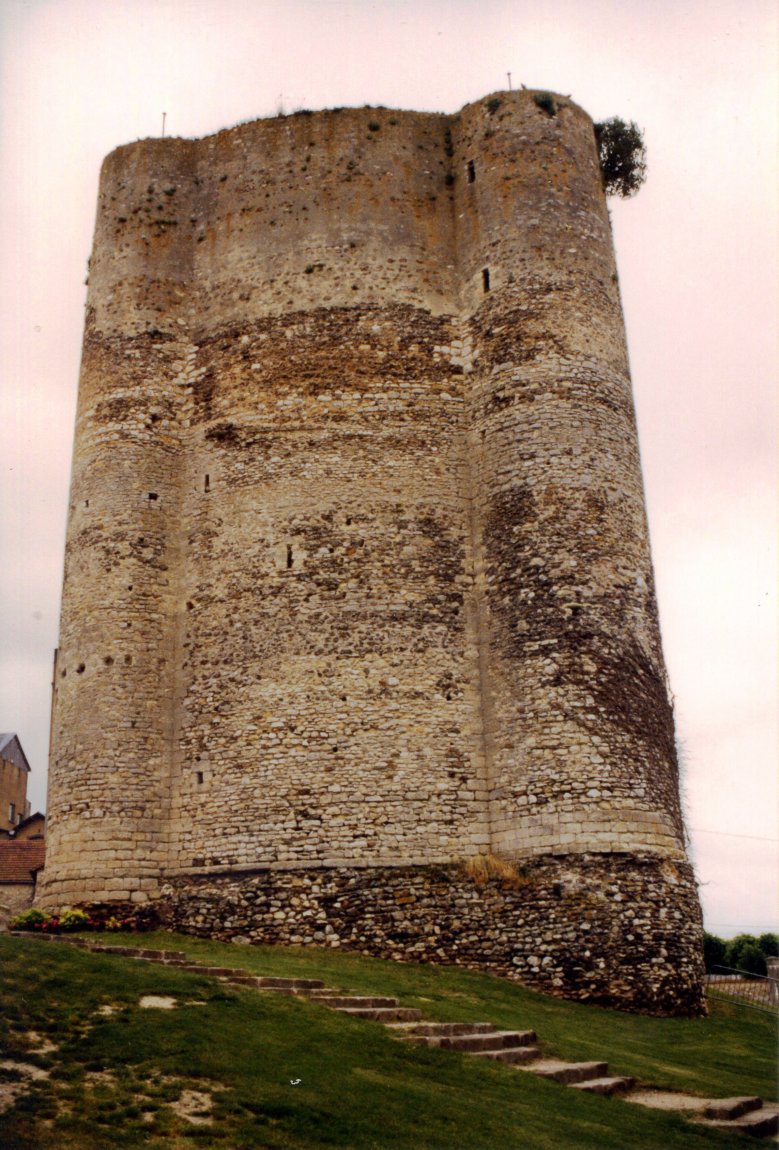Houdan

The castle is in the Ile de France and with Chevreuse protects
the Eastern approaches to Paris, some 35 miles away.
It
stands in Montfort lands and is claimed without evidence to have been
built by Count Amaury Montfort of Evreux (d.1137). All the
history that is actually known of the site is that it
stands on the site of Merovingian
necropolis and that the Montforts
became dukes of Brittany in 1365. On the extinction of the
ducal
house the castle passed to the Crown in 1532. Other than that
its
life seems eminently uneventful.

Description
The enceinte of
the castle is now gone leaving just the 82' high keep set on a low,
rocky outcrop dominating the surrounding town. The keep, some
50' in diameter and with walls over 10' thick, was modified to hold
a water tower and is now extensively and unsympathetically
modernised. It is externally round and has 4 round turrets,
rather than the one found at Longtown.
The interior is square with chamfered corners behind the
turrets. The west turret houses the spiral staircase, while
the remaining three are solid at ground floor level and provide
small chambers off the hall at 1st floor level. The original
entrance was 20' above the ground, set in the north
turret. From here a mural stairways leads down to the
basement and up to the hall. From the upper level a spiral
stair in the west turret led to the upper floor and battlements.
The mix of mural and spiral stairs as is often found in French castles,
viz. Loches, is
apparent. The upper walls are 16' higher than the gutter
to mask and protect
the roof, which was therefore presumably of combustible material when
the keep was built. Other buildings once stood against the
keep.
A seventeenth century sketch shows the castle as semi-derelict, with
much of the enceinte ruinous. However the keep was still
roofed
as was a round mural tower to the south, both still sporting pepperpot
roofs. Between the towers stood a rectangular free standing
hall-like building. A chapel appears to lie next to the keep
to
the north, beyond which was a gatehouse leading to the town to the
north. The whole site was surrounded by a deep moat and the
curtain where surviving to the south-west had many tall buttresses,
which appear more modern than those found at William Rufus' Gisors shell keep.
Why not join me here and at other French
castles? Information on this and other tours can be found at Scholarly
Sojourns.
Copyright©2019
Paul Martin Remfry


